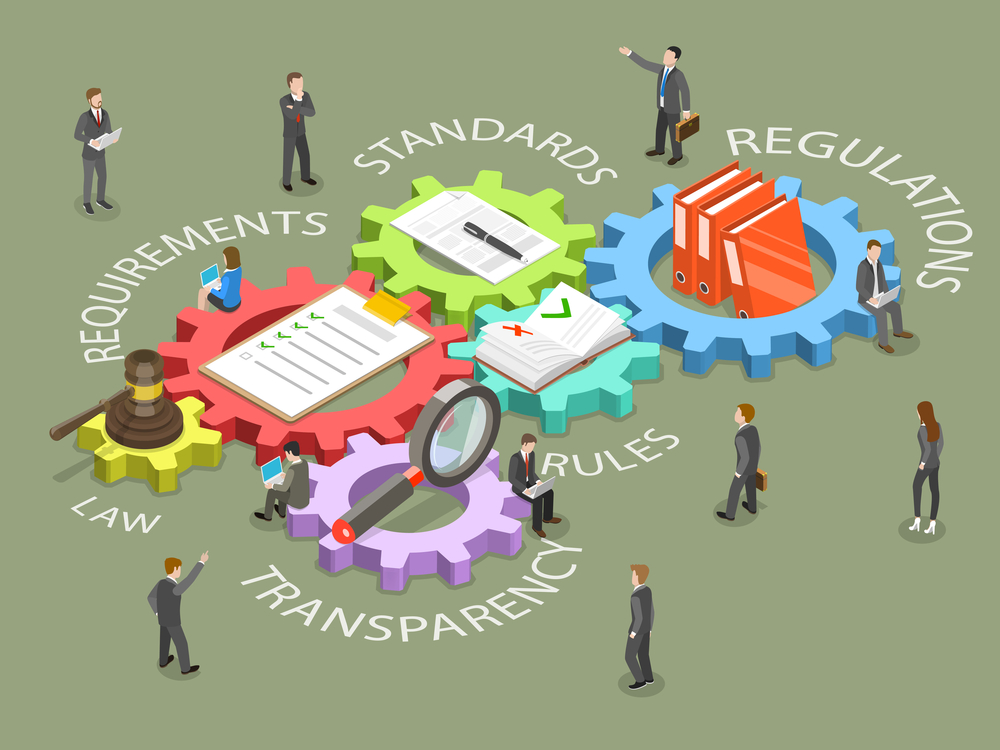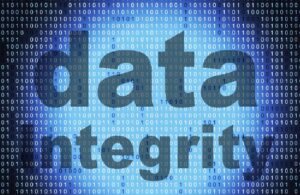
Cloud governance frameworks are different from traditional governance. The environment is too dynamic and too complex to follow traditional strategies. As a result, companies need a new, innovative way of thinking about cloud governance going into 2023. Some organizations have the expertise to begin a cloud governance strategy from scratch. However, many more will need the help of a framework to ensure the broadest coverage and consistency as cloud cybersecurity becomes even more pressing. Here are some common frameworks to get started.
See also: Cloud Governance Primer: What You Need to Know Now
Nine governance frameworks for securing the cloud environment
Here are some common cloud governance frameworks companies can leverage to create their own governance policies and procedures.
NIST Cloud Computing Framework
The National Institute of Standards and Technology (NIST) Cloud Computing Framework provides security and privacy guidelines for cloud deployments. The NIST framework includes guidelines for risk management, incident response, and access control, which are crucial aspects of cloud governance.
The NIST Cloud Computing Framework is divided into five functional areas: Security and Privacy, Compliance, Governance, Risk Management, and Operations. Additionally, the NIST framework provides guidelines for ensuring compliance with regulatory requirements–like HIPAA–that organizations must adhere to when deploying cloud services. The framework also guides companies to manage the overall cost of cloud deployments by preventing over-provisioning and under-utilization of resources.
COBIT
The Control Objectives for Information and related Technology (COBIT) is a framework that guides the governance and management of IT. It includes guidelines for security, risk management, and compliance.
COBIT can be helpful for cloud governance as it provides a comprehensive framework for IT governance and management, including cloud deployments. By using COBIT as a basis for cloud governance, organizations can ensure that their cloud deployments align with their overall IT governance and management strategy. This can help ensure that their cloud deployments are secure, compliant, and cost-effective. It also provides a standard approach for evaluating and managing the performance and risks of cloud service providers (CSPs).
ISO 27001
The International Organization for Standardization (ISO) 27001 is an international standard for information security management. It provides a framework for managing sensitive information and includes risk management, incident response, and access control guidelines.
ISO 27001 provides a systematic approach to managing sensitive data, including guidelines for identifying and assessing risks, implementing controls to mitigate those risks, and monitoring the effectiveness of those controls. This can help organizations to ensure that their cloud deployments are secure, compliant, and in line with their overall information security management strategy.
SOC 2
The System and Organization Control (SOC) 2 is a framework for evaluating the security, availability, and confidentiality of a cloud service provider (CSP) and its systems. It includes guidelines for access control, incident management, and risk management.
In addition, SOC 2 provides a set of trust services principles and criteria (TSPC) that CSPs must meet to be SOC 2 compliant. TSPC includes guidelines for security, availability, and confidentiality. By adhering to SOC 2, CSPs are demonstrating that they have appropriate controls in place to protect their clients’ sensitive data, which is a crucial aspect of cloud governance.
Cloud Security Alliance (CSA) STAR
The Cloud Security Alliance (CSA) STAR is a framework that guides the security of cloud deployments. It includes guidelines for incident management, access control, and security testing.
The framework covers five main domains of cloud security: Asset Security, Security Operations, Access Control, Monitoring, and Compliance. CSA STAR also includes a Self-Assessment Questionnaire (SAQ) that organizations can use to assess their cloud security controls and identify areas for improvement.
Additionally, the framework includes the Cloud Control Matrix (CCM), a spreadsheet-based tool that organizes security controls into three domains: foundational, operational, and performance. It is designed to be flexible, and organizations of all sizes—across all industries and with varying levels of cloud security maturity—can use it. Companies can use it as a self-assessment tool to determine the level of security implemented in an organization or as a third-party audit tool to verify the security of cloud-based services.
PCI DSS
The Payment Card Industry Data Security Standard (PCI DSS) is a framework that provides guidelines for the protection of payment card data. It includes guidelines for incident management, access control, and security testing.
PCI DSS also includes requirements for protecting sensitive cardholder data, such as securing networks and systems, protecting cardholder data during transmission and storage, and monitoring and testing networks to identify and remediate vulnerabilities.
By using PCI DSS as a basis for cloud governance, organizations can ensure that their cloud deployments are secure and compliant when handling credit card data, which can help to protect the organization from data breaches, damage to company reputation and brand, legal liability, and financial penalties.
AWS Well-Architected Framework
The Amazon Web Services (AWS) Well-Architected Framework provides a set of best practices and guidelines for designing, building, and operating secure, high-performing, resilient, and efficient systems in the cloud.
The AWS Well-Architected Framework is organized around five pillars: Security, Reliability, Performance Efficiency, Cost Optimization, and Operational Excellence. Each pillar includes a set of best practices and guidelines for secure, reliable, high-performing, cost-effective, and easy-to-operate cloud deployments. Additionally, the framework includes a self-assessment tool that organizations can use to evaluate their cloud deployments and identify areas for improvement.
Azure Governance Framework
The Microsoft Azure Governance Framework provides a set of best practices and guidelines for designing, building, and operating a cloud environment on Azure. The framework comprises three key areas: management groups, policies, and Azure Blueprints. The management groups provide a hierarchical structure for organizing and managing resources. Policies help to enforce compliance and security requirements, and Azure Blueprints provide a way to deploy, govern, and manage a set of Azure resources as a single unit.
The framework provides guidelines and tools for key areas of cloud governance, such as security, compliance, and cost management. It also includes a set of Azure Policy definitions, Azure Role-Based Access Control (RBAC), Azure Locks, and Azure Resource Manager (ARM) templates. Companies use these to enforce governance policies, manage access to resources, and automate the deployment of cloud resources.
Google Cloud Platform (GCP) Governance
Google Cloud Platform (GCP) Governance provides a set of best practices, tools, and technologies to help customers design, implement and operate a secure, compliant and efficient cloud environment on GCP. It can help with cloud governance by providing a comprehensive framework for managing and controlling the use of GCP resources and services.
It includes a set of tools, such as Cloud Identity and Access Management (IAM), Cloud Resource Manager, and Cloud Security Command Center, which can be used to manage access to GCP resources, enforce security policies, and monitor for security threats. Companies can create and manage users, groups, and roles, manage resources across the organization and enforce policies using organization policies and folders.
Additionally, Cloud Security Command Center provides centralized visibility into security threats and vulnerabilities across the GCP environment. GCP Governance also provides features like Stackdriver and Cloud Logging, which allow organizations to monitor and analyze logs, and trace performance issues.
Why follow an existing cloud governance framework
There are many reasons why a company might choose to follow an established cloud governance framework. Compelling reasons are the following:
- Compliance: Many cloud governance frameworks align with regulatory requirements, such as HIPAA, and can help organizations to comply with these regulations.
- Security: Cloud governance frameworks provide guidelines for securing cloud deployments, such as incident management, access control, and risk management. Adhering to these guidelines can help organizations to protect their data and systems from ever-evolving cyber attacks and data breaches.
- Cost optimization: These frameworks provide guidelines for managing and optimizing the use of cloud resources, which can be challenging for companies as they migrate operations. Following existing frameworks offered by cloud service providers can help organizations to reduce the overall cost of their cloud deployments by preventing over-provisioning and under-utilization of resources.
- Managing vendors: Some existing frameworks provide guidance for managing and evaluating cloud service providers (CSPs). This can help organizations ensure that their CSPs meet security, compliance, and performance requirements.
- Best practice: Cloud governance frameworks are based on best practices, and following them ensures that an organization’s cloud deployment is optimized for security, compliance, performance, and cost.
By following established cloud governance frameworks, organizations can ensure that their cloud deployments are secure, compliant, and cost-effective. Ultimately, this helps reduce risk and protect the company’s assets and reputation.
Companies don’t have to reinvent the governance wheel
These frameworks provide a set of best practices and guidelines for organizations to follow to ensure that their cloud environment is secure, compliant, and cost-effective. Organizations can select the framework that best aligns with their specific needs and regulatory requirements. Following established frameworks can reduce complexity and help companies develop a comprehensive and consistent set of governance policies. And it’s these policies that will protect the organization and help them get the most value from cloud deployments.

Elizabeth Wallace is a Nashville-based freelance writer with a soft spot for data science and AI and a background in linguistics. She spent 13 years teaching language in higher ed and now helps startups and other organizations explain – clearly – what it is they do.


